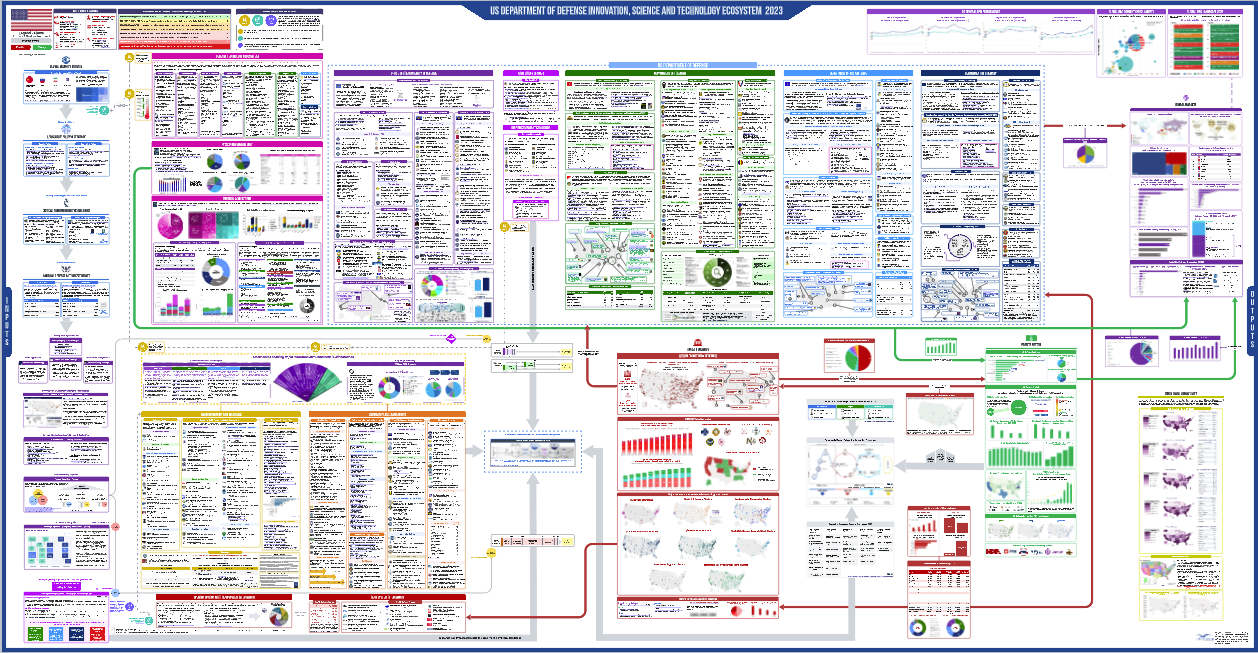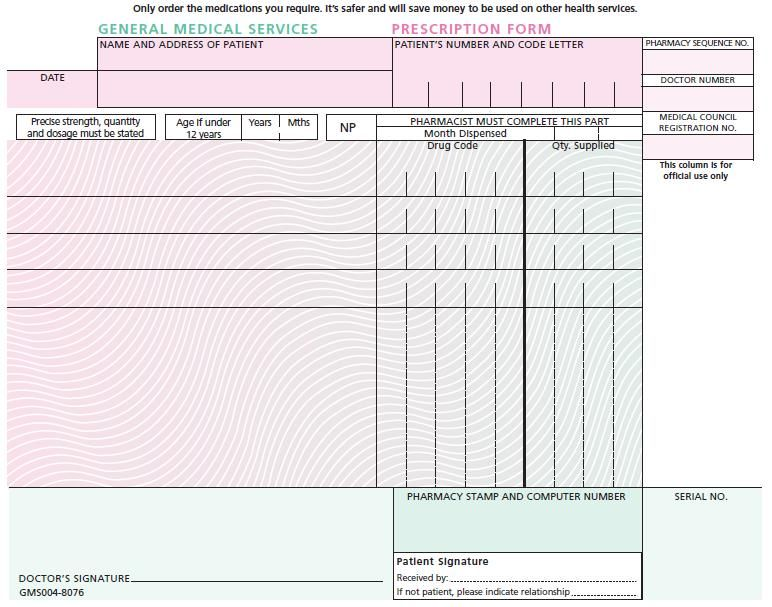The U.S. innovation ecosystem stands out as a beacon of productivity and creativity, attracting global admiration for its unique approach to fostering advancements across various fields, particularly in biomedical innovation. This dynamic system thrives on the synergy fostered by public-private partnerships, where collaboration between government agencies and private enterprises paves the way for groundbreaking developments in technology and medicine. A historic example of such innovation can be traced back to World War II, when substantial government research funding was allocated to accelerate the mass production of penicillin, revolutionizing healthcare. This strategic investment has laid the groundwork for ongoing discoveries, demonstrating the potential of combining federal resources with academic science. As we explore the intricate tapestry of the U.S. innovation landscape, it’s essential to examine how these collaborative efforts continue to drive progress, shaping the future of biomedicine and beyond.
At the heart of the United States lies a robust innovation network that exemplifies the confluence of creativity and research, often hailed as the gold standard globally. This ecosystem, characterized by its collaborative nature, effectively integrates contributions from universities, government institutions, and industry leaders to tackle pressing health challenges and drive biotechnological advancements. The historical context, particularly the seminal breakthroughs during World War II, illustrates how government-backed research initiatives have set a precedent for sustained success in biomedicine. These government-supported efforts to produce antibiotics like penicillin not only enhanced military health but also heralded a new era of public-private collaboration that has become a model for other nations. Engaging with this ecosystem further reveals the critical importance of federal funding, effective partnership frameworks, and innovative practices that continually evolve to meet the demands of modern society.
The Origins of U.S. Biomedical Innovation
The roots of the U.S. biomedical innovation ecosystem can be traced back to the early days of World War II when federal initiatives ignited a collaboration between government agencies and academic institutions. This partnership was born out of necessity, as the U.S. was facing significant technological challenges amidst the war. Pioneering leaders recognized the urgent need for research that could yield immediate applications, particularly in fields such as medicine. With government support, scientists were enlisted to explore new technological frontiers, leading to historic breakthroughs like the mass production of penicillin.
This initial collaboration set the stage for what would become a robust biomedical innovation system. By integrating public and private sectors, the U.S. was able to streamline research and development, resulting in swift advancements. Penicillin, although discovered earlier, was produced at scale through federal-sponsored research, demonstrating how government funding can catalyze innovation. This model not only addressed wartime medical challenges but also laid the groundwork for future partnerships in biomedical sciences, proving the efficacy of collaborative research funding.
Public-Private Partnerships in Biomedical Research
Public-private partnerships (PPPs) play a crucial role in the U.S. innovation ecosystem, particularly in advancing biomedical research. These collaborations between government agencies, private companies, and academic institutions harness the strengths of each sector, enabling faster progress in drug discovery, medical technology, and public health. The successful development of penicillin during World War II exemplifies how such partnerships can address urgent health needs and lead to significant advancements in medical care and treatment.
Today, as questions about government funding arise, the importance of these partnerships becomes even more pronounced. With federal government support being a fundamental pillar of the U.S. biomedical system, it is vital to sustain and nurture these collaborations. Through effective investment in public-private partnerships, innovation can continue to flourish, driving breakthroughs that impact global health outcomes. The synergy created between diverse stakeholders not only facilitates rapid technological advancements but also ensures that new discoveries translate into practical solutions for patients.
The Impact of Government Research Funding
Government research funding has been a cornerstone of the U.S. biomedical innovation landscape, significantly influencing the trajectory of medical advancements. Over the decades, federal agencies like the National Institutes of Health (NIH) have provided critical resources that enable researchers to investigate complex health issues. This support has led to groundbreaking discoveries, particularly in areas like infectious diseases, where developments during and after World War II transformed public health.
However, the evolving landscape of governmental science funding raises concerns. As administrations propose cuts to research budgets, the potential repercussions could stifle the progress in biomedical innovation that has been established over the years. Sustaining adequate funding for public research is essential, not only for continuity but also for exploring new frontiers in medical science. Maintaining a strong commitment to funding ensures that future generations of scientists could continue to thrive and contribute to the health ecosystem.
The Historic Journey of Penicillin
The story of penicillin is a pivotal chapter in the history of medicine, representing one of the first major breakthroughs in antibiotic therapy. Discovered in the 1920s, it was not until the urgent demands of World War II that the need for large-scale production surfaced. Initially seen as a research curiosity, the mobilization of resources by the government led to the establishment of manufacturing techniques that transformed penicillin into an essential drug, saving countless lives among the military and civilians alike.
The significance of this journey extends beyond historical context; it showcases the values of rapid innovation and adaptability under pressure. The lessons learned from the mass production of penicillin continue to inform current biomedical practices and policies, reinforcing the importance of maintaining an environment conducive to scientific exploration. This transformation epitomizes how targeted funding and collaborative initiatives can generate monumental advancements in healthcare.
The Role of Technological Change in Medicine
Technological change is a driving force behind advancements in medicine, affecting everything from diagnostic tools to treatment methodologies. The U.S. innovation ecosystem is particularly recognized for integrating emerging technologies into healthcare solutions, fundamentally reshaping patient care. Innovations such as telemedicine, wearable health devices, and data analytics are just a few examples of how technology has enhanced medical practices, leading to better patient outcomes.
As funding and collaboration between government and the private sector evolve, embracing technological innovations becomes increasingly critical. The potential to transform patient care through technology is vast. By fostering an environment that prioritizes R&D investment in technology and medicine, the U.S. can continue to lead in biomedical innovation, ensuring that advancements are not only accessible but also effective in addressing contemporary health challenges.
Challenges Facing Biomedical Innovation Today
While the U.S. biomedical innovation ecosystem boasts significant successes, it is not without challenges. Recent discussions surrounding federal funding cuts to biomedical research threaten to disrupt decades of progress and collaboration among public and private entities. Such cuts could hinder the momentum necessary for future breakthroughs and limit the resources available for addressing pressing health issues.
To navigate these challenges, a balanced approach is essential. Strengthening public-private partnerships and advocating for sustained research funding are critical to maintaining the health and vitality of the biomedical sector. By addressing these challenges head-on and restoring faith in collaborative innovation, the U.S. can continue to uphold its position as a global leader in health and biomedical advancements.
Cultivating Future Generations of Scientists
One of the most valuable outcomes of the U.S. innovation ecosystem has been the cultivation of a new generation of scientists and researchers. The collaborative nature of public-private partnerships during and after World War II played a significant role in training thousands of budding scientists, leading to advancements that have shaped contemporary medicine. Educational institutions became breeding grounds for talent, fueling the biomedical research pipeline that continues to thrive today.
By fostering an environment that encourages young researchers to engage in government-funded projects and explore innovative pathways, the biomedical field can ensure its future success. Additionally, early involvement in research activities allows emerging scientists to gain invaluable experience, helping them to contribute meaningfully to ongoing medical advancements.
The Future of Public-Private Collaboration
As we look to the future of biomedical innovation, the evolution of public-private collaboration will be essential. The framework established during World War II laid a robust foundation that still informs current practices; however, evolving healthcare landscapes demand new approaches to collaboration. By embracing innovation and fostering partnerships across sectors, the U.S. can continue to push the boundaries of what is possible in health and medicine.
Future public-private partnerships should prioritize not only efficiency but also inclusivity, ensuring that diverse voices and expertise are incorporated for comprehensive problem-solving. By leveraging shared objectives and resources, the biomedical ecosystem can tackle global health issues more holistically, ushering in a new era of health innovation that is both collaborative and impactful.
Lessons Learned from Historical Biomedical Innovations
The historical journey of biomedical innovations such as penicillin provides invaluable insights into the dynamics of public health and scientific progress. The collaborative efforts of government, academia, and industry demonstrated how urgency can drive innovation. The ability to mobilize resources quickly to address public health crises has been pivotal in advancing medical science, reinforcing the idea that collaborative frameworks can yield significant results.
Reflecting on these lessons, the contemporary biomedical landscape must continue to embrace the spirit of innovation fostered during tumultuous times. As challenges paradoxically arise alongside opportunities in healthcare, understanding the historical context of past breakthroughs can guide current and future efforts in developing robust strategies to sustain and enhance the biomedical innovation ecosystem.
Frequently Asked Questions
What is the role of public-private partnerships in the U.S. innovation ecosystem?
Public-private partnerships are crucial to the U.S. innovation ecosystem as they facilitate collaboration between the government and private sector. This collaboration has historically driven advances in biomedicine and technology, with shared resources leading to breakthroughs that benefit both industry and society. These partnerships emerged significantly during World War II and continue to enhance U.S. technological leadership.
How has government research funding shaped the U.S. innovation ecosystem?
Government research funding has played a pivotal role in shaping the U.S. innovation ecosystem. By financing academic research and supporting public-private partnerships, federal funding has fostered advancements in various fields, particularly in biomedicine. This funding model promotes innovation, spurring job creation and economic growth while allowing for crucial discoveries in technology and medicine.
What historical events influenced the development of the U.S. biomedical innovation ecosystem?
The development of the U.S. biomedical innovation ecosystem was significantly influenced by World War II, when government-supported research led to the mass production of penicillin. This period marked the establishment of key public-private partnerships and an expanded role for federal research funding, laying the foundation for the modern biomedical landscape we see today.
What was the impact of the penicillin mass production on the U.S. innovation ecosystem?
The mass production of penicillin during World War II was a landmark achievement that had a profound impact on the U.S. innovation ecosystem. It showcased the efficiency of collaboration between academia, industry, and government, leading to significant advancements in medical science and establishing a model for future biomedical innovations. This innovation reduced military and civilian mortality rates from infectious diseases and catalyzed further research and drug development.
Why is the history of penicillin significant to understanding the U.S. innovation ecosystem?
The history of penicillin is significant to understanding the U.S. innovation ecosystem because it exemplifies how wartime challenges can drive scientific breakthroughs through collaborative efforts. The successful development and mass production of penicillin highlighted the importance of federal support, signaling a shift towards a more integrated approach to biomedical innovation, influencing subsequent health advancements and policy.
How do universities contribute to the U.S. biomedical innovation ecosystem?
Universities play a fundamental role in the U.S. biomedical innovation ecosystem by serving as centers for research and education. They contribute significantly to scientific discoveries and advancements through federal research funding, often in collaboration with industry and government. This synergy helps train the next generation of scientists and fosters a culture of innovation critical to advancements in health and technology.
What challenges does the U.S. innovation ecosystem face regarding federal funding?
The U.S. innovation ecosystem currently faces challenges related to the scrutiny of federal funding levels, particularly concerning biomedical research. Proposed cuts to reimbursement for indirect research costs could hinder public-private partnerships and stifle innovation. Balancing budgetary concerns with the need for sustained investment in research is vital to maintaining the competitiveness of the U.S. innovation system.
What lessons can be learned from the U.S. innovation ecosystem’s response to World War II?
The U.S. innovation ecosystem’s response to World War II offers valuable lessons in the importance of public-private partnerships and rapid mobilization of resources for urgent challenges. Collaboration between government, academia, and industry proved effective in addressing immediate needs and catalyzing long-term research advancements, serving as a blueprint for future crises in healthcare and technology sectors.
How has the landscape of technology and medicine evolved within the U.S. innovation ecosystem?
The landscape of technology and medicine within the U.S. innovation ecosystem has evolved dramatically, particularly since the establishment of public-private partnerships post-World War II. With increased federal funding and a focus on research collaboration, the biomedical field has transitioned from trial-and-error methods to evidence-based approaches, leading to groundbreaking developments in drug discovery and therapeutic interventions.
What is the future outlook for the U.S. innovation ecosystem in the biomedical field?
The future outlook for the U.S. innovation ecosystem in the biomedical field is promising, provided that sustained investment in public-private partnerships and federal research funding continues. Innovations in technology and medicine, combined with a strong focus on addressing current challenges such as pandemics and chronic diseases, will likely drive further advancements, solidifying the U.S.’s position as a global leader in biomedical research.
| Key Point | Details |
|---|---|
| Start of U.S. Innovation Ecosystem | The U.S. innovation ecosystem began during WWII, spurred by the urgent need for technological advancement and government support. |
| Role of the Federal Government | Federal funding has historically supported academic research, driving private sector development and innovation in various fields. |
| Public-Private Partnerships | The partnership established during WWII led to significant advancements in technology, especially in biomedicine, and remains fundamental today. |
| Impact of WWII on Biomedical Research | WWII accelerated drug development processes, with penicillin serving as a key example of successful mass production, establishing a foundation for future biomedical advancements. |
| Continuation of Research and Development | The infrastructure created for wartime research continued to foster postwar biomedical innovation, establishing long-term benefits for public health. |
| Training New Scientists | The war effort trained a generation of scientists, filling research positions with skilled individuals prepared to advance U.S. research initiatives. |
| Current Challenges and Future Considerations | Current debates focus on funding models and the importance of maintaining effective partnerships to sustain innovation. |
Summary
The U.S. innovation ecosystem is renowned globally for its ability to foster technological advancements and breakthroughs. This ecosystem, which has its roots in the collaborative efforts of the federal government and academia during World War II, has evolved over the past 80 years into a formidable force driving growth in biomedicine and beyond. Continued emphasis on public-private partnerships is essential for the sustainability and success of this system, ensuring that innovations can thrive and address both current and future challenges in health and technology.



